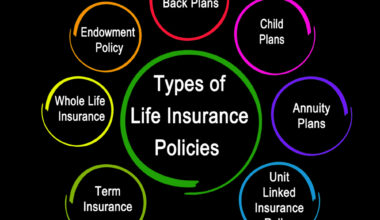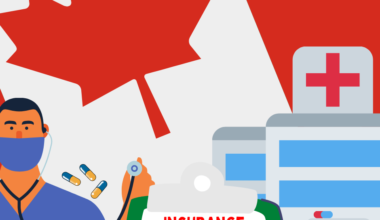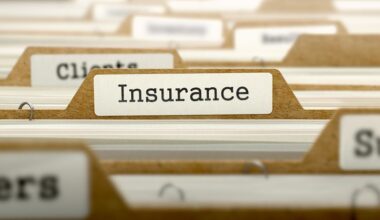How To Make The Most Of Your Loans And Insurance In The US
The first step for consumers is to understand their financial objectives. What are they trying to accomplish with the loan?
There are many reasons to get a personal loan, but the most common is debt consolidation, says Dan Matysik, vice president at Discover Personal Loans.
He believes a loan can be a smart financial tool with which to reduce debt more efficiently and save money at the same time.
“With a personal loan, consumers can pay off higher interest debt and ultimately save interest,” he said. “This gives them a fixed payment and reduces the number of payments they have, putting their debt all in one place so they can manage it and eliminate it over time.”
According to Matysik, it’s crucial for consumers to assess their financial situations and to be honest with themselves about where they stand. “Before even approaching the lender, people should have answers to questions like ‘What is my monthly cash flow?’ and ‘How much am I earning and where is my credit positioning?'” Matysik said.
The process doesn’t take much time, he said, and gathering that type of information can be empowering to the consumer.
- Research What The Right Loan For You Is
With so many lenders to choose from, and each offering different rates and terms, it’s not surprising that a consumer often gets confused when shopping for a loan. You need to find a product that meets your financial objectives.
There are a couple of key considerations, Matysik said.
The first is the flexibility of the loan terms. “[I]f the consumer understands their cash flow—they can use a loan calculator tool on one of our websites—they may say, ‘I might need $15,000 to do that consolidation, and I think my monthly payment is around $300,'” Matysik said. “That can help them determine, should it be a three-year loan or a four-year loan?”
Consumers have a lot of flexibility, with terms between three and seven years for their loans.
Most critical, according to Matysik, is that consumers fully grasp the total cost of the loan, which may include origination fees. “Often, these days, some of the larger online lenders charge up to 5 or 6 percent origination fees,” he said.
He suggests that consumers look for loans with no origination fees and seek out terms that fit their repayment schedules.
- Understand The Total Cost Of Credit
There are countless options available for personal loans from different lenders, each with its interest rate. Just as with credit cards, yearly interest rates for personal loans are calculated using an annual percentage rate (APR).
It’s important to remember that even though one lender may offer a lower interest rate, all costs of the loan need to be taken into consideration, including any origination fees that apply. “When you add the origination fee [to a lower interest rate], the cost of credit is more than you anticipated,” Matysik said. He added, “I think this is sometimes a concept consumers don’t always understand.”
Another potential cost to consider is the prepayment penalty. Although most lenders do not charge it, you’ll want to ensure you can pay your loan off early or in lump sums without penalty.
- Use Debt To Positively Affect Your Finances
Sometimes when consumers apply for a personal loan they can become complacent, assuming it will solve their financial problems. That complacency could lead them back to higher-interest debt use. Suddenly, they’re back at square one.
“I think one piece of advice to consumers to help them eliminate the debt is to go for a loan with a fixed term and a fixed rate, so at the end of the term, the loan is paid in full,” Matysik said.
He said most personal loans, including those offered by Discover, are flexible, allowing you to make a lump sum payment to lower the principal without penalty.
Consumers can stay on top of their financial situations by monitoring their credit statuses. Matysik said consumers can check their credit health with Discover’s Credit Scorecard. Customers can also see their outstanding debt and what factors are positively or negatively impacting their credit score.
The key is to avoid viewing the now zero balance on your higher-interest debts as a clean slate. Instead, the debt consolidation loan should be treated as a significant commitment — and your top financial priority.
The points below are necessary and important if you must make most of your loans and insurance policy in the US.
- Consult your independent insurance agent.
Your agent can review your policies and make recommendations on how you might reduce your premium. Review our benefits of working with an independent insurance agent infographic for more information on how an agent can help ensure you have the right combination of coverage, value, and price.
- Review your deductibles.
The deductible on your auto deductible from $250 to $1,000 or homeowners deductible from $1,000 to $2,500 could reduce your premium by about $20 or more a month. That’s money back in your pocket. Or, if you do not already have one, you might consider putting it toward an umbrella policy. With a policy of $1 million of coverage starting at as little as $20 a month, financial experts agree that an umbrella offers the best value for the dollars you spend on insurance. Learn more about how an umbrella policy protects your family and your assets.
- Evaluate your coverage and limits.
Remember, as your life changes, your insurance needs also evolve, and you may need more or less coverage or higher or lower limits. For example, the Insurance Information Institute recommends that you “consider dropping collision and/or comprehensive coverages on older cars. If your car is worth less than 10 times the premium, purchasing the coverage may not be cost-effective.” Kelley Blue Book, your bank, or a local auto dealer can give you a sense of what your vehicle is worth.
- Combine your home and auto accounts.
Most carriers, including The Hanover, offer total account discounts. So, having your home, auto, and other personal policies with one insurance company will help keep your premiums down. This short video provides more details on how consolidating your policies with one insurance company can help you save money – and even provide more robust coverage.
- Take advantage of discounts.
Have a child who just left for college? You may qualify for a student away-from-home discount on your auto policy. Does your child do well in school? You could qualify for a good student auto discount. More of a homebody? You might be eligible for a low mileage discount. Have a home security system? That should help reduce your home insurance rates. Live in a gated or over-55 community? That, too, could offer savings on your home insurance rate. Your life circumstances continue to change. So, when you sit down with your independent insurance agent, ask if there are any new discounts that you qualify for that could help bring down your rates. The Insurance Information Institute offers more ways to save on home and auto rates.
- Avoid risks that increase your rates.
Having certain pets, installing a swimming pool with a diving board, and putting a trampoline in your backyard are three ways you can quickly increase your home insurance rates or make you ineligible for insurance with certain carriers. Driving a lot of miles can impact your auto premiums. Consult your independent insurance agent on what risks may raise your rates.
- Assess the full financial picture.
If you have a small fender bender or sustain minor damage to your home, in the long run, it may be more cost-efficient to pay for the repairs out of pocket as claims can increase your premiums.
- Be safe and loyal.
Many insurance companies, including The Hanover, recognize safe driving and customer loyalty with coverage options such as second-chance accident forgiveness and deductible dividends. Jumping from insurance carrier to insurance carrier could offer small immediate savings, but you could lose valuable loyalty credits.
Many factors determine what your insurance rates are – and why they may go up. Often, it is not what you are doing, but what other drivers and homeowners are doing that hurts premiums across the board. Review our home and auto trends infographics to learn more about why rates are on the rise.
While saving money is alluring to most, remember that you don’t want to cut your insurance protection so much that should something happen, you do not have the coverage limits you need to get your car back on the road or your home rebuilt. Your independent insurance agents can guide the pros and cons of adjusting your coverage to reduce your premiums. Your independent insurance agents can guide the pros and cons of adjusting your coverage to reduce your premiums.
Be Careful.






